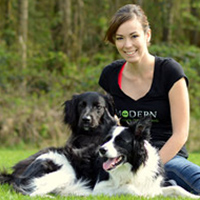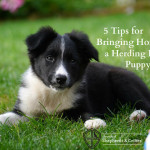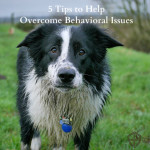What to Expect When Adopting a Herding Breed Dog: A Complete Guide
Part One: What to expect when adopting and tips for an easy transition
Whenever we make the choice to adopt a dog that has previously been neglected or abused, we need to fully understand what we are getting ourselves into. While our hearts mean well, sometimes the results can be catastrophic for both parties. In this two-part guide, I'll provide helpful tips on what to expect when adopting a herding breed dog, to ensure an easy transition.
There is no shortage of herding breeds given up - you see them at shelters, on local ads, and specific rescue groups for individual herding breeds (Border Collie’s, Aussies, Corgi’s, Kelpies, ACD’s, etc.). The main reason a herding breed is given up? “The dog was just too much, he needs to be on a farm and have space….”
This leads us to adoptions. When you seek out an older dog (even an older pup), shelters and legitimate rescue groups will help you determine whether that dog is right for you and your lifestyle. Remember that even if you have experience with a Border Collie, for example, it doesn’t always mean all Border Collie’s are the same. It’s great when these facilities can screen potential adopters to make sure everything goes smoothly, but sometimes you come across a certain dog that makes your heart flutter and dance, and you have to rescue it. If that sounds familiar, this is for you!
ADOPTING FROM A FAMILY
This way can be a wonderful way to help a dog in need. Some families don’t want to relinquish a dog to a shelter (due to the stressful environment), so they opt to rehome the dog themselves by putting an ad out or telling family and friends.
BE CAUTIOUS
This method is dangerous for YOU, the adopter. Many owners will lie in order to ”get rid of the dog”. (Yes, there are people out there like this, sadly enough). Often you’ll hear:
What they say: “He’s great with our kids”
What they mean: “He’s only been around our kids”
What they say: “He’s got a lot of energy that we just don’t have time for”
What they mean: “We never take him out; he destroys everything, jumps on people, a little crazy overall”
What they say: “He can be shy of strangers”
What they mean: “He’s nipped or lunged at people and I can’t deal with it”
By no means am I saying that every time an owner is relinquishing their dog, they are lying… but these lines are the typical ones you will see and the “what they mean” is what the adopter finds out later when the dog is home with them.
Ask the questions that give you more insight of how the dog has been raised and whether you’re ‘up’ to the task of behaviour modification training, if needed.
- Did you do a puppy class and/or obedience class with the dog?
- If so, where did you take him? (Look the place up to get an insight of how this dog was handled.)
- Is he house-trained? (Do you see or smell urine in the home?)
- How is he with other dogs?
- Intact dogs, puppies?
- Does he play with dogs?
- How is he with children?
- The household children DO NOT COUNT
- Does he enjoy children?
- How is he with strangers coming in the house?
- How is he with walking?
- How is he off leash?
- Has he been to the vet lately?
- Who’s your vet? (If you decide to adopt the dog, get the vet records to make sure there isn’t’ a huge underlying medical issue you’re unknowingly taking on.)
If all the questions check out fine, your next step is to go out with the current owner and dog to a local park where you will encounter other dogs, kids, strangers and much more stimuli to see how this dog handles in a busy situation. These scenarios are a herding breed’s kryptonite. By assessing the dog in its worst environment, you’re really going to get a feel of the issues, if any.
If the dog does well, or even if the dog has a few problems that you notice, but you feel that you can handle them, your last step to ensure a good adoption would be to have an overnight trip to your house.
THE SLEEPOVER (Trial run)
This is the last step in a potential adoption; it’s kind of like a trial for you and the dog. You want to bring the dog into your environment and see how he does for a day or two.
- Be understanding that this is all new to the dog and he may not act normal, since he’s out of his comfort zone.
- Try not to be pushy with affection right off the bat. It can take some time for herding breeds to feel fully comfortable with humans.
- Don’t assume anything. Just because the owner says the dog is good with kids does not mean the dog is comfortable with your kids – be watchful and supervise all interactions, making sure to give the dog space.
By having this time away from the owner, you can see a more true version of the dog’s personality - is he nervous, shy, outgoing, fearless, barky, aggressive?
Once you’ve had the dog on a sleepover, it’s time to add everything up and make sure you think ahead.
Herding breeds are very needy dogs that require close relationships with their owners in order to feel truly happy. Can you provide this to the dog?
Good luck with your adoption!
Article By:
Kris Crestejo, CDBC
Meet Our Evangelist







